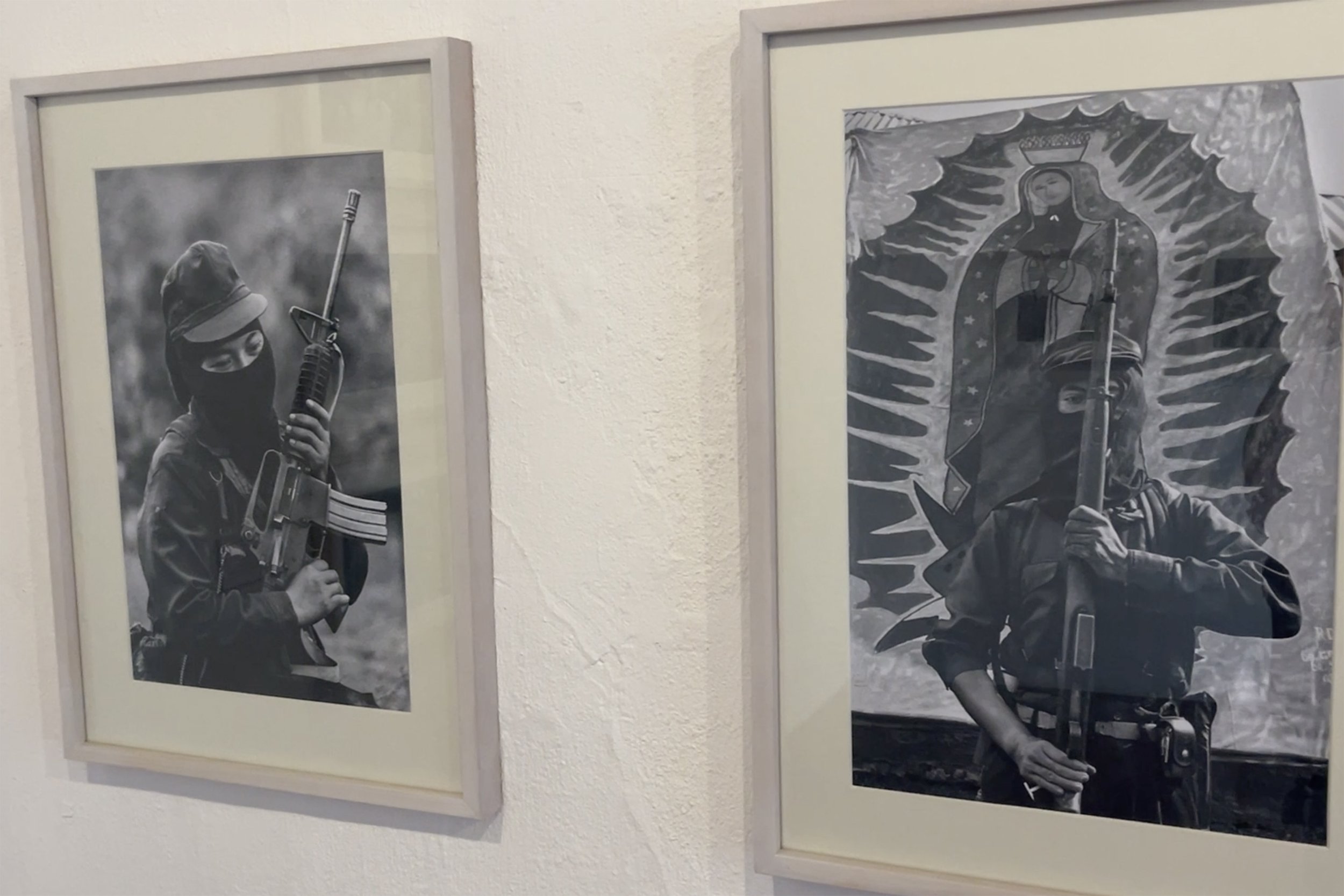Blog 2.7
After a week of hanging out at the beach it was time to leave the coast and head towards Oaxaca. Thankfully a couple days before we arrived in Mexico the new highway connecting Oaxaca and Puerto Escondido opened, cutting down what would have been a 6-7 hour drive to a 3.5 hour drive when leaving from Zipolite.
Cows in the back of the truck
Colors in Oaxaca
Oaxaca city
Once we made it to Oaxaca we went and found our hotel so we could get rid of the car and explore around. The parking spot was very tight, but thankfully the vehicle fit and we were able to ditch our stuff and head out. Our hotel was in the old town part of Oaxaca, just a couple blocks away from the famous Mercado 20 Noviembre (Market: November 20th) as well the Zócalo (main square).
Our little hotel room in Oaxaca(📸 Chantelle)
Our vehicle parked in the courtyard (📸 Chantelle)
Room 213 (📸 Chantelle)
Mosaic art in the hotel (📸 Chantelle)
It was Valentines day when we arrived, so the city was bustling with people carrying flowers, wearing red and heading to their favorite restaurants for dinner. The Zócalo was one of our first stops, checking out the Catedral Metropolitana de Nuestra Señora de la Asunción, which is one of several beautiful Cathedrals in Oaxaca. Although the cathedrals were beautiful, the streets were just as exciting with all the vendors selling balloons, clothes, black pottery and even coffins. I could have honestly spent weeks here without getting bored, there was so much to see in the very small portion of the city we explored our first day.
The Cathedral of Our Lady of the Assumption (📸 Chantelle)
All the churches are highly detailed
Catedral Metropolitana de Nuestra Señora de la Asunción
Colors fill all the spaces in the Churches
Black clay is widely used across Mexico
Balloon vendors in the Zócalo
Valentines day gifts
A grandmother gives her grandson some money
Coffin sales man
Getting a trim
Pasillo de Humo (Smoke Corridor/Alley) at the famous Mercado 20 Noviembre (Market: November 20th)
Graffiti on an abandoned car
Masks
Pups watching from the roof (📸 Chantelle)
Street vendor carrying her wares
Hard work
Dressed up for valentines day
There’s always someone carrying a lot at once
School Kids
Basilica de nuestra senora de la soledad (📸 Chantelle)
A cross outside Basilica de nuestra senora de la soledad
As night started to roll in I noticed what looked like a wrestling ring set up and got excited at the possibility of lucha libres (mexican wrestling). I had been trying to hunt down a wrestling match online without a ton of luck, and unfortunately it wasn’t lucha libres, but it was boxing. Hilariously if you have a big camera and walk with enough confidence they will let you shoot ringside.
Mexican police
Confidence
The battle
The war
The win
After I had got my fill of boxing, we went to kill a bit of time before dinner. It wasn’t even a couple blocks from the square when we stumbled across a parade of music, color and dancing. Oaxaca truly is alive every minute of the day.
Celebrations
Colors
Celebrations (📸 Chantelle)
Zolcalo at night
Stillness in the chaos
I would be remiss if I didn’t mention the art found all over Oaxaca. One of the very popular art collectives, subterraneos, (which we also saw back on the coast) could be seen wheatpasted everywhere in the city. The buildings were covered in murals painted on top of the vibrant colors already adorning the buildings. We even happened to find a very powerful photo exhibition at the Manuel Álvarez Bravo Photographic Center called, “30 Years of EZLN: Memory of a struggle”. The exhibit, which focused on an armed indigenous organization who declared war on the Mexican Government, featured images from photographers Patricia Aridjis, Ángeles Torrejón, Marco Antonio Cruz, Antonio Turok, Raúl Ortega, Alberto Ibañez and Juan Carlos Reyes.
Street wheat paste of a photo set (artist unknown)
Subterraneos
Subterraneos
Subterraneos
Photos from the "30 años del EZLN, memoria de una lucha" exhibit
Photos from the "30 años del EZLN, memoria de una lucha" exhibit
Building art (📸 Chantelle)
Subterraneos
Subterraneos
Subterraneos
Wheat paste and Cartonería figure
Subterraneos
Inside of a bar/restaurant (📸 Chantelle)
Subterraneos
Subterraneos





















































